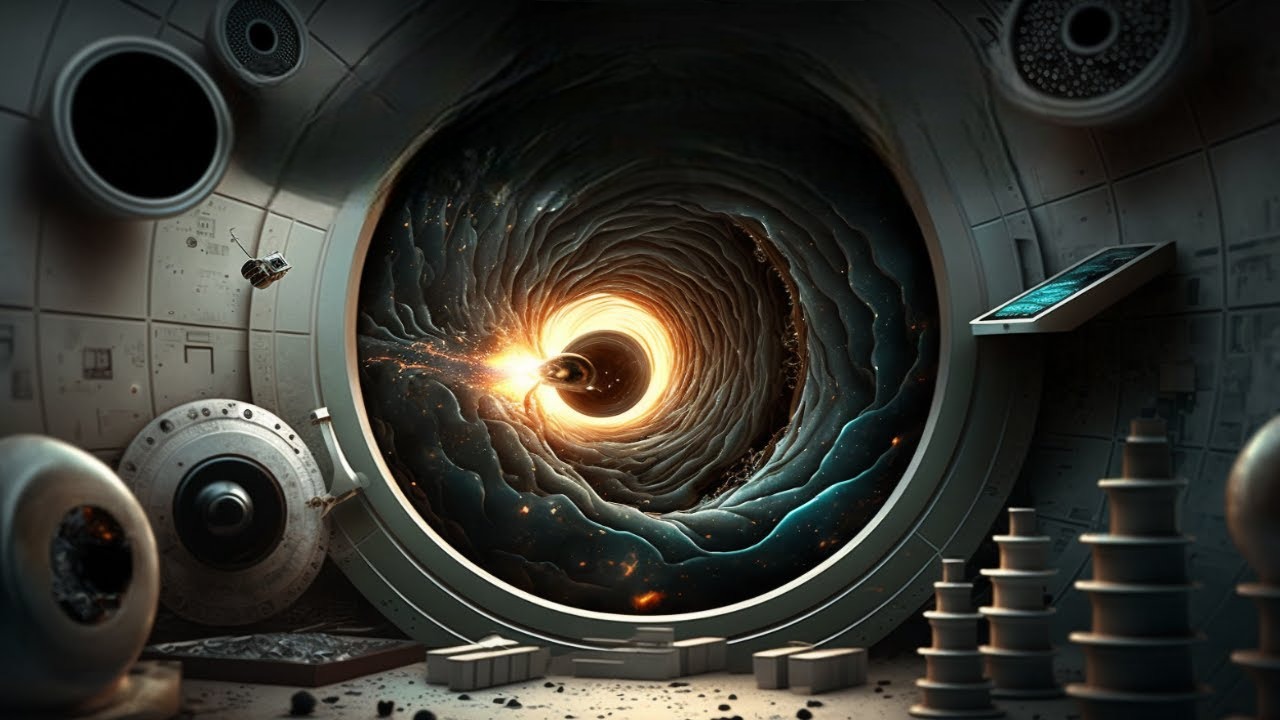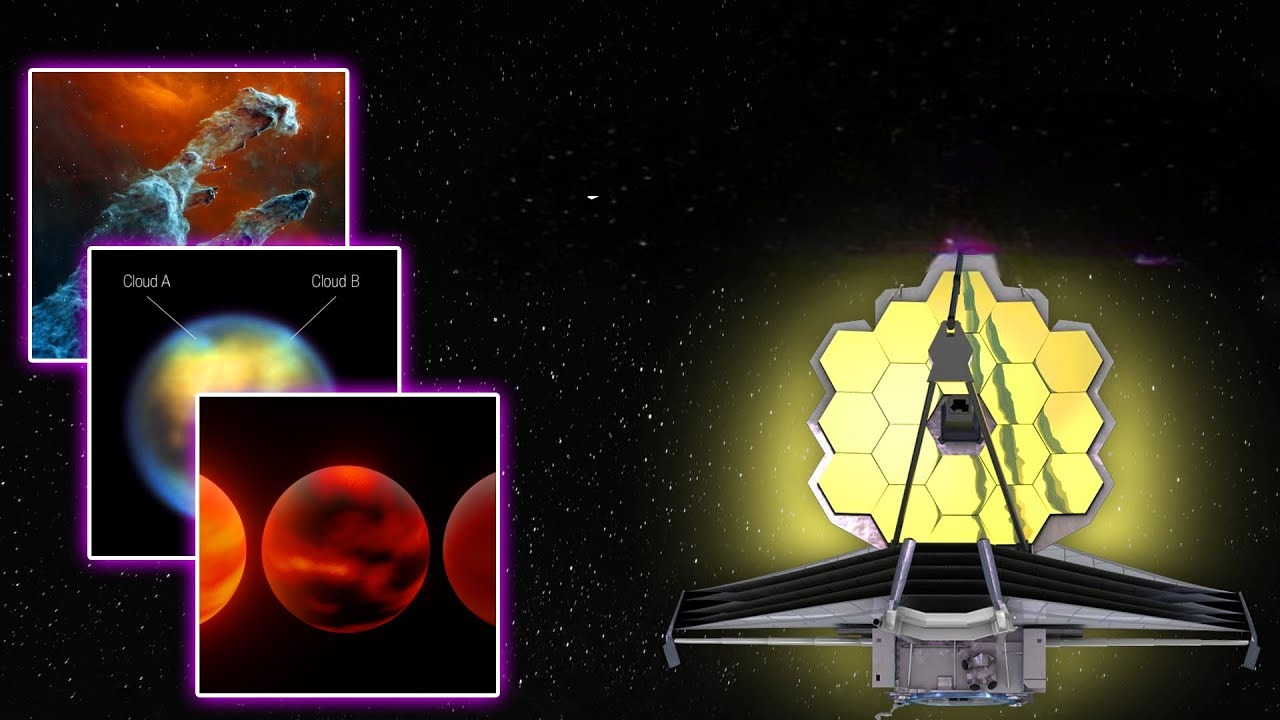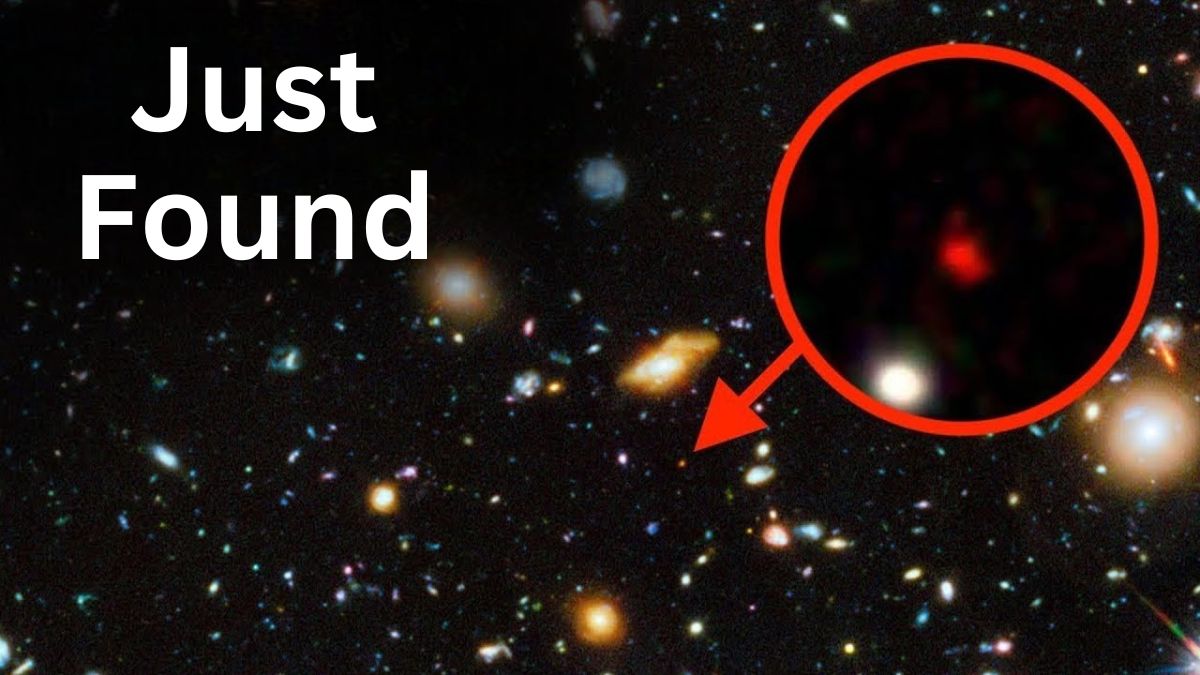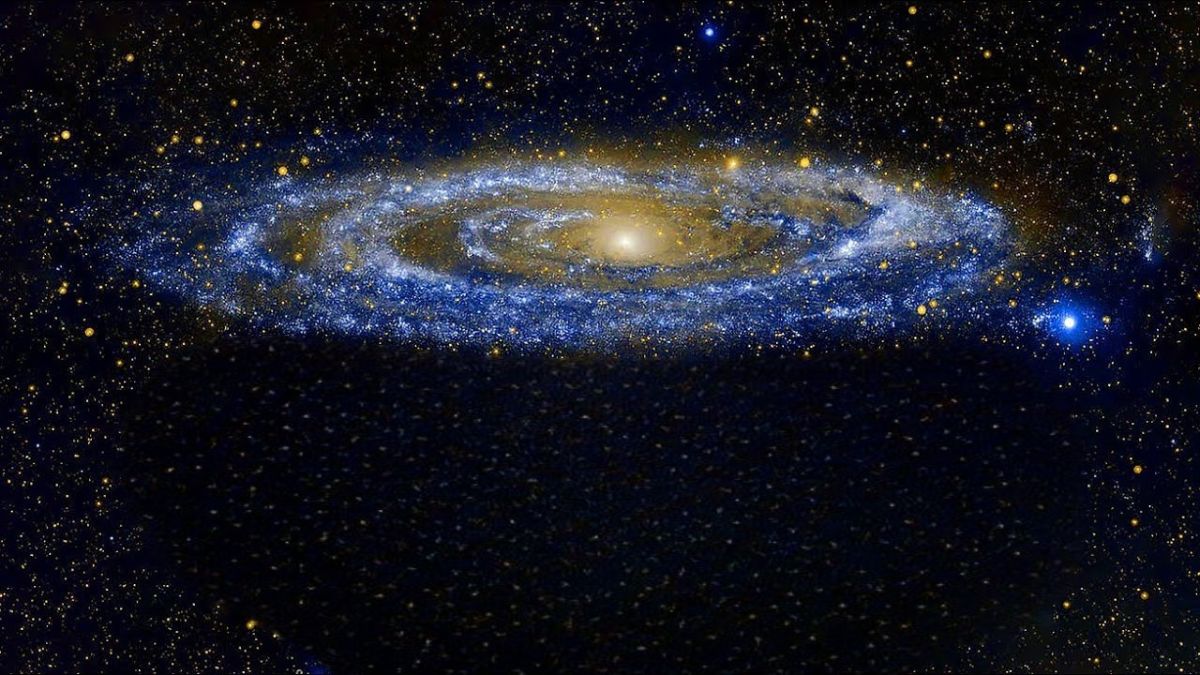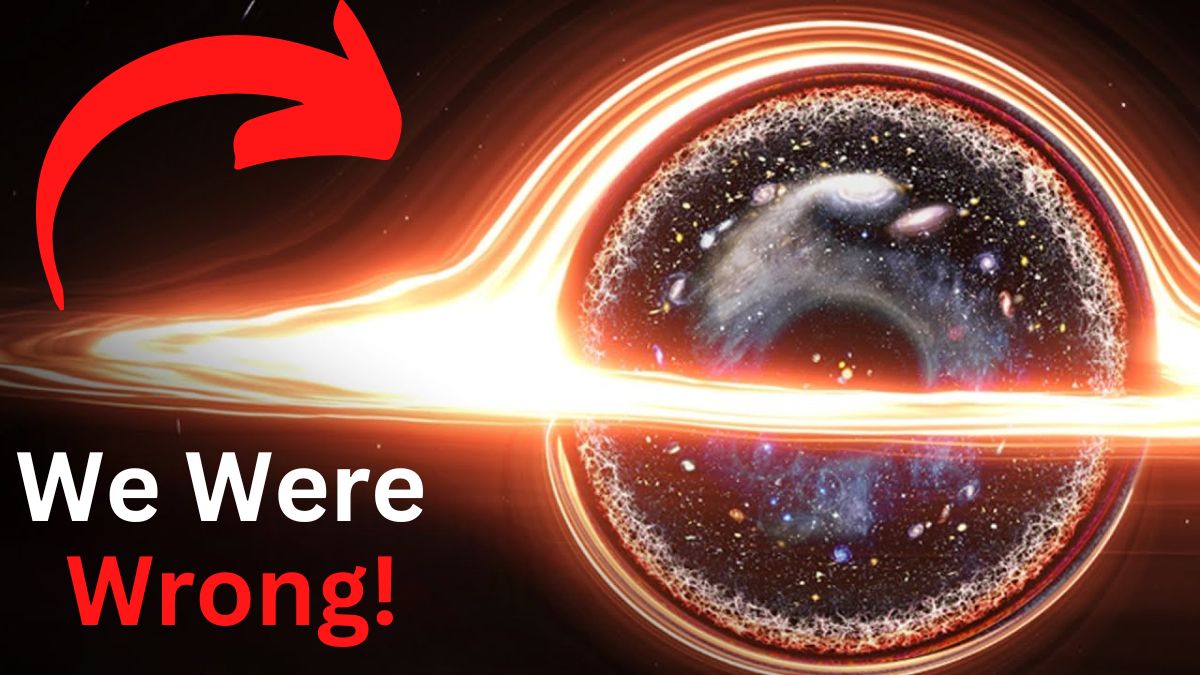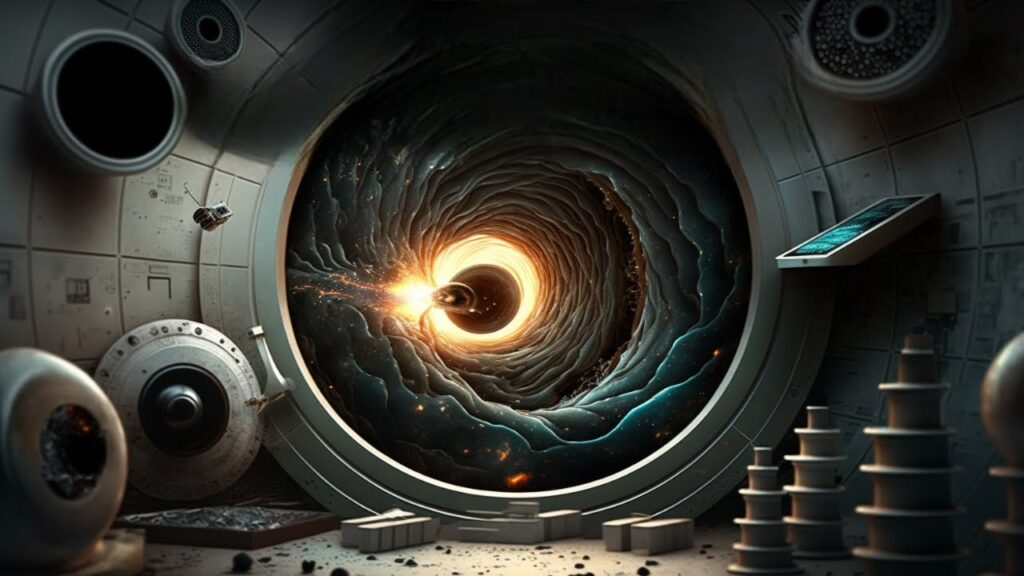
Black holes have long been regarded as one of the universe’s most terrifying phenomena.
They have captivated the imaginations of scientists and the general public with their capacity to consume anything that gets too close, including entire galaxies and stars.
However, these mysterious objects have a lot more to them than meets the eye.
Up until now, it was impossible to get close enough to black holes to study them, despite their fascinating properties.
By creating an actual black hole in their laboratory, researchers have recently made a significant advancement in their understanding of black holes.
Details that no one could have foreseen have been revealed as a result of their experiments.
The study of black hole behavior and properties now has a completely new direction.
Come along with us as we investigate the ground-breaking discoveries made possible by the creation of a laboratory-made black hole as we delve into the amazing and enigmatic universe of black holes.
We’ll take a look at what scientists have learned about these mysterious objects and what this could mean for the future of science and humanity as a whole.
Let’s get started now that we’ve cleared that up.
Black holes captivate the imaginations of both scientists and the general public with their power and allure.
However, what precisely are dark openings?
Let’s take a closer look at Einstein’s theory of relativity to better comprehend this.
In this theory, space and time are intricately connected in the fourth dimension, which is commonly referred to as space.
Because of this, gravity is not a force in the traditional sense; rather, mass causes a curvature in space-time.
If we were to picture this idea, it would look like the surface of a trampoline with a large bowling ball on it.
Smaller objects are drawn into the dip by the sagging surface caused by the ball.
Black holes operate in a similar manner, but their density is infinite, resulting in a space-time abyss that is nearly impossible to comprehend.
John Mitchell, an English natural philosopher, was the first to suggest the existence of black holes, opening the door to the mystery surrounding them in 1783.
He thought that even though they were invisible, these strong gravity fields could be seen if a star was in their orbit.
In the hope of discovering the secrets behind these fascinating phenomena, researchers have continued to investigate black holes ever since.
In the early 1970s, astronomers Louise Webster, Paul Murden, and Thomas Bolton observed an invisible object orbiting a blue star from 6,000 light-years away, confirming John Mitchell’s prediction about the existence of black holes.
This object, which was given the codename Cygnus X1, is regarded as the first black hole to be discovered.
We now know that at least two trillion galaxies in the universe that can be observed contain supermassive black holes at their centers, and that the Milky Way contains up to 400 million black holes.
Supermassive black holes can be found in areas of space with multiple galaxies that contain hundreds or even thousands of them.
Black holes are more than just things that absorb energy and matter.
A phenomenon known as Hawking radiation can also be emitted by them from the edge of their event horizon.
Stephen Hawking first predicted this in 1974, but there was no evidence to back it up.
Black holes continue to remain shrouded in mystery despite their widespread presence in our universe.
The amount of power that must be contained within them is mind-boggling.
Despite the fact that we may never be able to fully comprehend black holes, they provide us with an opportunity to investigate the unknown and learn about the universe beyond our own.
Despite the efforts of scientists, it is still difficult to observe black holes up close due to their elusive nature.
The sheer power of black holes inspires awe and wonder, opening up new avenues for investigation.
However, the question remains: why are we unable to simply enter a black hole to collect data?
The event horizon, a region at the edge of a black hole from which nothing but light can escape, holds the key to the solution.
If you crossed this line, you would unavoidably enter the black hole’s singularity, or core.
In comparison to an observer far from the black hole, time significantly slows down as you approach the event horizon.
The most potent gravitational forces in the universe come into play as you continue to descend, causing everything in their path to be distorted and crushed to the point of disintegration.
Reaching the singularity, where space-time collapses and nothing can escape, would be inevitable even if survival was possible.
As a result, falling into a black hole is a terrifying and fatal experience.
Without putting human lives at risk or requiring costly space missions, this experiment gives researchers a one-of-a-kind chance to examine black holes and put their theories to the test in a controlled setting.
However, it is essential to keep in mind that this laboratory-created black hole is still a long way from being a genuine black hole because it lacks the massive gravity and singularity of a genuine black hole.
Nevertheless, it is a significant advancement in our comprehension of these enigmatic objects.
We can only imagine what other ground-breaking discoveries we will make in the future as researchers continue to push the boundaries of what we know about black holes.
We might one day be able to see these cosmic wonders up close and even use their power to our advantage.
Black hole research remains one of the most fascinating and awe-inspiring branches of science up until that point, reminding us of how much more there is to learn about our universe.
The virtual particle-antiparticle pairs that are constantly produced at the event horizon of the black hole are what give rise to the type of energy known as hawking radiation.
When these particles are created at the event horizon of a black hole, one particle can be pulled into the black hole while the other one escapes as radiation. In normal circumstances, these particles quickly annihilate each other and disappear.
Since this radiation is so weak, it is hard to see from actual black holes in space.
However, by fabricating a black hole in a laboratory, researchers may be able to produce a Hawking radiation that is more potent and easier to detect, allowing them to investigate how particles behave in extreme conditions.
The capacity to investigate black holes and the phenomena that surround them in a laboratory setting has the potential to have far-reaching effects on our comprehension of the universe.
It could, for instance, help us gain a better understanding of how black holes interact with their surroundings, such as how they influence the formation and distribution of dark matter in galaxies.
It could also shed light on fundamental physics mysteries like how gravity works and how particles behave in extreme conditions.
Even though the lab-grown black hole experiment is still in its infancy, it has already demonstrated the potential for significant advancements in our comprehension of the universe and new discoveries.
In the years to come, we can anticipate even more exciting developments in black hole research as technology advances and scientists continue to push the boundaries of what is possible.
Nevertheless, it is essential to keep in mind that the idea of using Hawking radiation as a source of energy is still purely theoretical and faces significant technological obstacles.
The energy required to create a black hole would probably outweigh any potential benefits of harnessing its radiation, and creating and containing a black hole in a laboratory setting is an extremely complex and costly endeavor.
However, the ability to create and study black holes grown in a laboratory opens up a new field of study and may result in ground-breaking physics and other discoveries.
The mysteries of black holes and the possibilities for their applications will undoubtedly continue to captivate and inspire us as scientists continue to push the boundaries of our understanding of the universe.
The risks and ethical considerations of creating a black hole cannot be ignored, despite the fact that the potential benefits are certainly intriguing.
Unexpected outcomes could result from creating a black hole in a laboratory, and it is impossible to rule out the possibility of accidentally creating a dangerous black hole.
In addition, there is a possibility that the energy released as Hawking radiation will have unidentified effects on the environment.
It is critical that any experiments and research in this area be carried out with extreme caution and consideration for the potential dangers and consequences.
Any experiments must be carried out in a safe and responsible manner, and the scientific community must weigh the potential benefits and risks.
In conclusion, while the idea of creating a black hole for the purpose of scientific research and the generation of energy is exciting, it is essential that we approach this area of research with caution and place a high priority on safety and ethical considerations. What are your thoughts on this?

